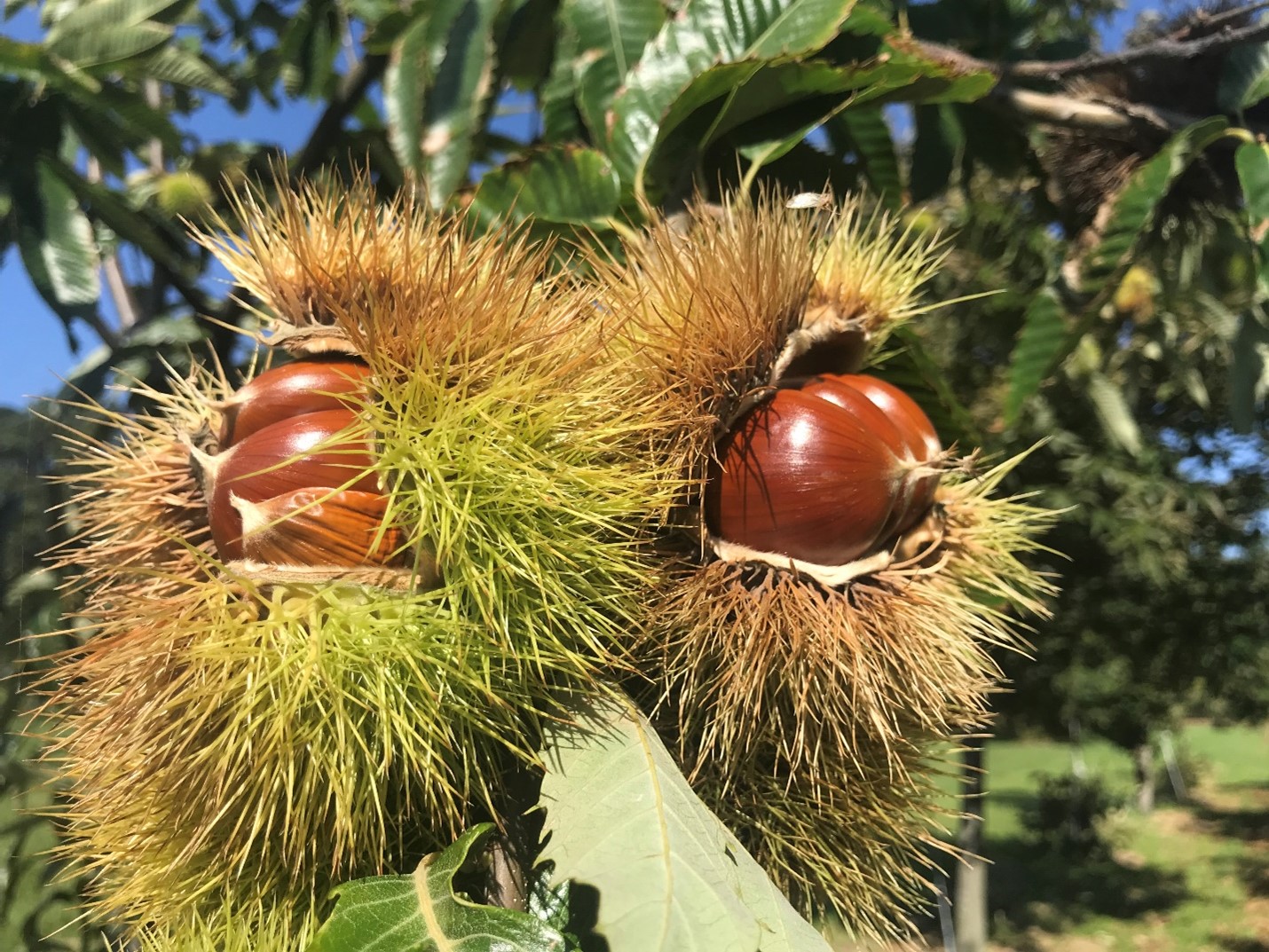Seedling vs. Grafted Trees
Determining if you should utilize grafted or seedling trees should be based on your goal. Seedling trees may be proficient for wildlife mast and landscape, but for commercial production, grafter cultivars are preferred in Michigan. Below, we will discuss the reasons that grafted cultivars are superior for Michigan chestnut production.
In Michigan, all commercial chestnut orchards should be established with cultivars that have been selected by horticulturalists for superior qualities. These cultivars are not produced through seed, but are cloned by grafting or budding onto seedlings that will support the chosen cultivar. In this manner, a single tree with beneficial traits can be copied millions of times by simply cutting small branches from the chosen tree and attaching it onto the stem of planted seedlings. Conversely, seedlings are the result of sexual recombination between a known mother tree and an unknown father, resulting in endless variability and unreliable characteristics making them suboptimal for commercial production.

- Cultivars are predictable in performance (e.g., winter hardiness, harvest time, pollen production, nut size).
- Grafted cultivars are mature when planted and therefore initiate nut production in Michigan much sooner than seedlings.
- Seedling trees are highly unpredictable, and may never produce a high yielding, optimal crop. This uncertainty is unacceptable given the time and money investment needed to bring chestnuts to bearing age.
There are many benefits of using grafted cultivars compared to seedling trees. Cultivars allow growers to consider and select for specific traits based on grower needs and goals. Cultivars are predictable in performance and can be selected to optimizing production. Important characteristics that may help a grower select between cultivars include harvest time, pollen production, and nut size, all of which are unknown in seedling populations.
Regardless of their size or age, grafted cultivars are mature when planted and therefore initiate nut production immediately with substantial yields within 5 years. This earlier production allows growers to recoup their establishment costs and start generating revenue more quickly. Seedling trees my not become productive for many years, if ever. This means that the fertilizers, pesticides, irrigation, etc. given to non-productive trees in the seedling orchard are wasted resources. Additionally, since cultivars are grafted from mature tissue, they usually drop leaves at the appropriate time in the autumn and are less prone to related winter injury. Young seedling trees have a tendency to hold onto leaves well into winter which can accumulate ice and snow which can break limbs further damaging productivity.
The initial cost of purchasing seedling trees is much lower than grafted cultivars, this alone can make them attractive to prospective growers. However, the premium cost of grafted cultivars is recouped quickly through faster, increased, and more reliable nut production. The MSU Chestnut Cost of Production has shown that growers producing superior chestnut cultivars can recoup their investment in as little as six years and have the potential to see substantial returns on their investment over time. Research has shown that seedling orchards produce far fewer nuts and take longer to begin bearing, it is impossible to create a representative economic model as there is too much variability in the germplasm. Remember, there is no known method to predict the quality of chestnuts from seeds until they are mature. This is due to the shuffling of genes during the sexual crosses leading to the development of the seed.
To start out with the best possible plan for success, growers establishing a chestnut orchard in Michigan should carefully consider their choice of plant material.
Different chestnut species
Generally, there are three species of chestnut that contribute to the genetic makeup of chestnut trees planted in orchards. The species from which cultivars have been selected are those that have a long history of chestnut cultivation, including the Chinese chestnut, the Japanese chestnut (and its subspecies, Korean chestnut) and the European chestnut (Castanea mollissima, C. crenata, and C. sativa, respectively). Some of today’s cultivars are actually hybrids or crosses among these three species. The species can appear similar looking at first, after all they are all edible chestnuts, but using differences such as leaf shape, leaf hairs, stem anatomy and nut characteristics, one can soon begin to tell them apart. Certainly, the hybrids between these trees are difficult to tell apart from the parents that helped form them. Today, we rely on DNA analysis to tell the species and cultivars apart with accuracy.



 Print
Print Email
Email